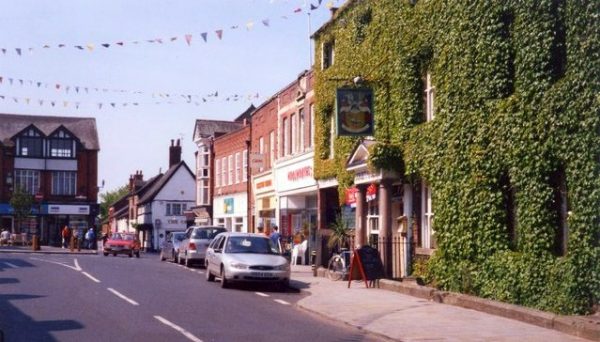Following on from my post on the markets and fairs of Market Drayton (posts passim), my home town, the following comment was left on the site by Andrew Allen long after comments on the post itself were closed.
Andrew also grew up in Market Drayton somewhat later than myself and my siblings and his words are reproduced below.
I was born and brought up in MD and for some reason I just had a flashback of the Court Leet which I recall being re-enacted when I was a child in the late 1970s.
It was great to read your notes about the Court. We have a photo at home (my mother’s) of a load of gentlemen standing outside the Corbet in their finery, I guess around 1900… it has my grandfather in the shot… I now think that must have been the Court Leet.
Anyway, thanks for your notes.
Courts Leet were a very old institution. According to Wikipedia, “The court leet was a historical court baron (a manorial court) of England and Wales and Ireland that exercised the “view of frankpledge” and its attendant police jurisdiction“.
My original source for information of Market Drayton’s Court Leet – Peter Hampson Ditchfield’s 1896 book, Old English Customs Extant at the Present Time: an account of local observances – states the following:
At Market Drayton there are several fairs held by right of ancient charter. One great one, called the “Dirty Fair,” is held about six weeks before Christmas, and another is called the “Gorby Market,” at which farm-servants are hired. These are proclaimed according to ancient usage by the ringing of the church-bell, and the court-leet procession marches through the town, headed by the host of the “Corbet Arms”, representing the lord of the manor, dressed in red and black robes, and the rest of the court carrying silver-headed staves and pikes, one of which is mounted by a large elephant and castle. At the court several officers are appointed, such as the ale-conner, scavengers, and others. The old standard measures, made of beautiful bell-metal, are produced, and a shrew’s bridle, and then there is a dinner and a torchlight procession.

Only two officers of the court are mentioned by Ditchfield – the ale-conner and scavengers. The ale-conner’s duties were to ensure the quality of ale and to check that true measures are used. The duties of scavengers were to ensure standards of hygiene within the lanes and privies and to try and prevent the spread of infectious disease.
The ceremony Andrew remembers seeing as a youngster in the late 70s was a one-off re-enactment in 1977 for the Queen’s Silver Jubilee. The Shropshire Star sent a photographer to record the event. The paper’s record of the celebrations, including the court leet re-enactment is still available online. As regards photographs of the original court leet, the Shropshire Archives collection contains 3 photographs of the court leet, all dating from the first decade of the twentieth century. According to the National Archives, the Shropshire Archives also contain a printed menu from 1936 for the Market Drayton Tradesmen’s Association dinner held at the Corbet Arms Hotel after Drayton Manor Court Leet broadcast. So it seems the court leet may have survived in some form until the mid-1930s.
Many thanks to Andrew for getting in touch and sharing his memories.
If anyone has further knowledge of which other officers constituted the Court Leet, please use the comments below or the contact form.